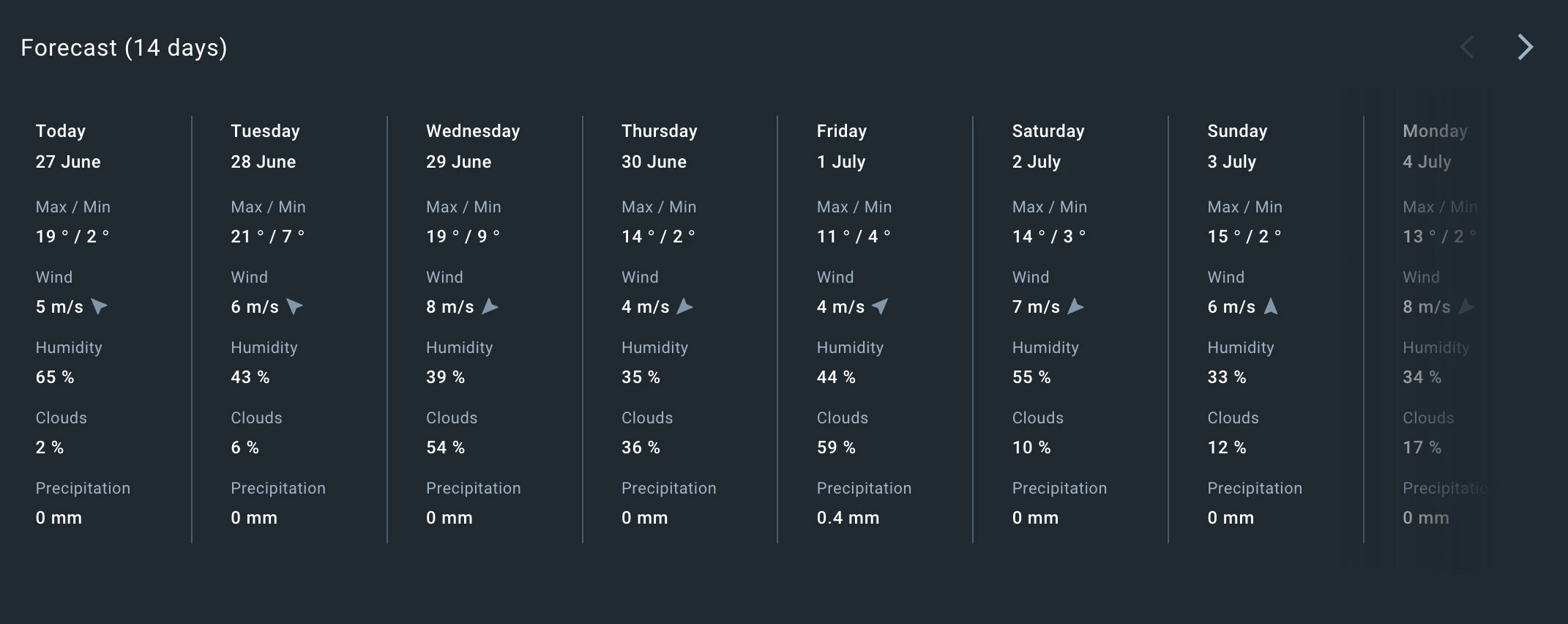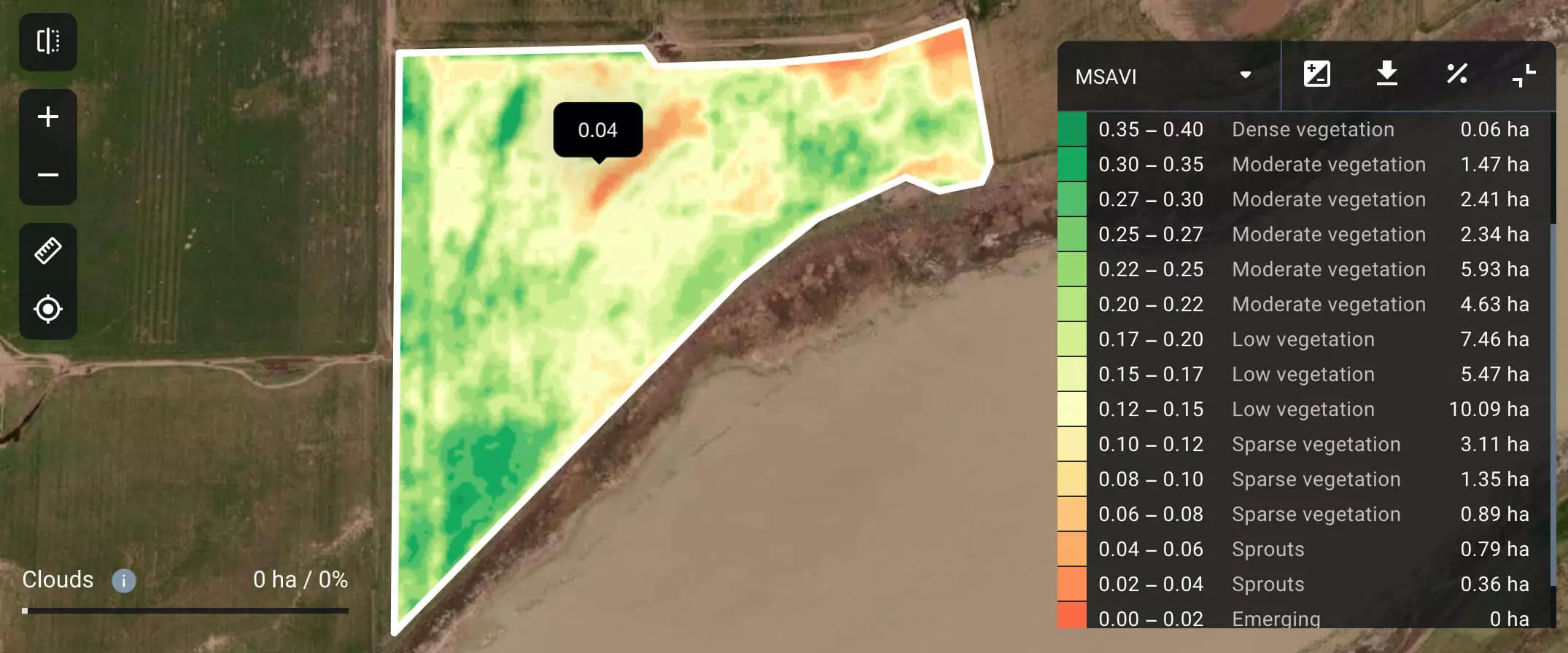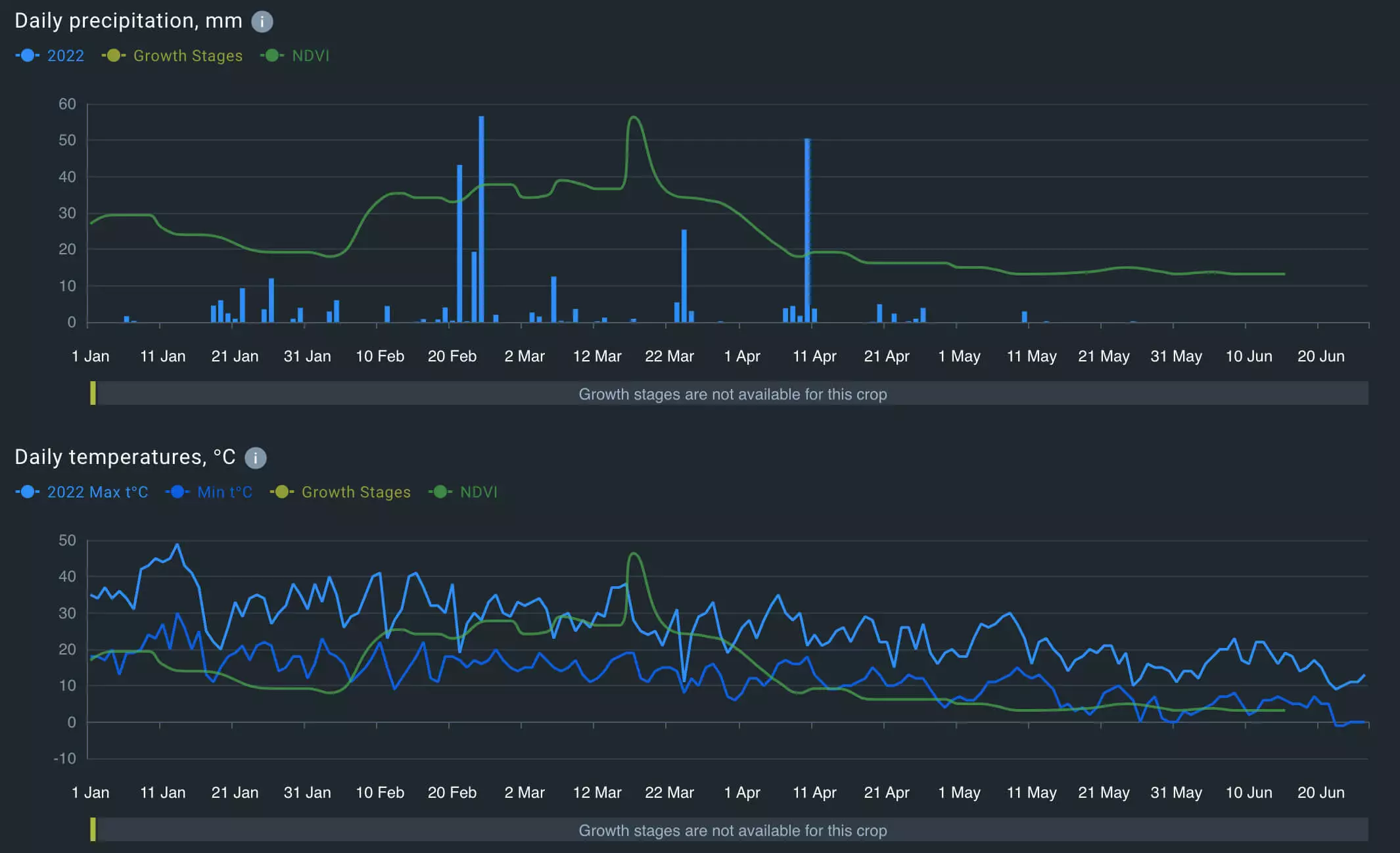Frost Damage Plants: Assessment & Prevention Methods
Timely frost damage prevention is essential for crop health. Frost is a hazardous phenomenon for sowing. It can happen unexpectedly and damage the entire crop or its significant part. Due to unforeseen climatic conditions, farmers cannot always prevent losses. Therefore, it is best to prepare and prevent crop losses in advance. Here are some methods growers use to prevent frost damage.
Frost Damage Prevention Methods
There are different ways to prevent crop losses from extreme cold: from chemical solutions to common agricultural approaches to precision agriculture methods. Let’s discuss some of them.
Does Spraying Plants With Water Prevent Frost Damage?
Yes, moisture serves as a kind of insulator shielding the crop surface. If the cells are saturated with fluid, they develop better and tolerate frost. When freezing, 1 g of water releases about 80 calories of heat. Therefore, a plant leaf encased in such an icy shell can remain unharmed at 32 degrees F (0°C) for a long time.
Farmers often use this method of frost damage prevention for growing grapes, as well as for plants like strawberries, blueberries, and apples. Growers can use the moisture spray technique for specific circumstances. For example, spraying water on plants to prevent frost damage is suitable if the air humidity is low when frost is approaching. You need to start processing shortly before the freeze onset and do it until it runs out. To prevent plant frost damage successfully, you need to wet the plant regularly. Otherwise, the plant will suffer if the ice temperature is the same as the air.
Thus, farmers need to monitor differences in the weather to prevent crop losses continually. It is where modern technology comes to the rescue. For example, the EOSDA Crop Monitoring app provides accurate field-specific forecasts for 14 days. In addition, farmers can use special warnings about the upcoming extreme cold. Users can also set up a notification system for temperature fluctuations on their own. Such measures will help prepare for spring frosts.

Watering plants to prevent frost damage, farmers should maintain the proper balance: too wet plants also become vulnerable to frost. Determine the amount of liquid needed per the crop’s type. This technique doesn’t prevent losses to delicate plants and doesn’t protect crops from harm at temperatures below 23-24 degrees F (-4°C). In such situations, you should use other methods to prevent losses.
Spraying it on the cold-sensitive plants’ foliage significantly decreases the transpiration level, the evaporation of moisture from plants. The resulting invisible polymer film effectively prevents excessive humidity and frost accumulation. You can buy antitranspirant at almost any specialty store.
What Is The Best Way To Cover Plants To Prevent Frost Damage?
Another way to prevent plant damage is to cover them. To do this, you can use fabric or plastic. To prevent damage to crops, protective material can be placed on stakes. Then it will not touch the foliage and at the same time prevent losses from freezing. Also, you can use mulch for covering plants to prevent frost damage. It effectively retains heat. But literally the next day after extreme cold, the mulch must be removed so as not to harm the plants.
Identification Of Frost Damage
Unfortunately, farmers do not always manage to prevent losses from frosts in time. In these cases, it is important to know how to identify frost damage. Satellite technologies allow everyone to do this, even being at a distance from the place of the event. So, EOSDA Crop Monitoring offers a valuable feature: crop analysis based on vegetation indices. Each of them applies to a particular growth stage. For damage assessment in the early season, if frost damage prevention is impossible, the MSAVI is often appropriate. It is more efficient to use NDVI and NDRE to analyze damage during the first freezing if we talk about mid- and late season.

Based on data analysis for one of the indicated indexes, scouts can go to the most affected areas for manual crop damage assessment. Based on these reports, farmers can act accordingly to fix damaged areas and adjust further actions on the given field. They also can plan upcoming seasons more accurately to prevent losses in the future.
Historical Weather To Help Set Growing Season Timelines
Monitoring changes in weather and climate conditions in previous decades is essential for preventing frost damage to plants in the long term. With its help, farmers can adjust the beginning of the growing season (sowing) and choose the best frost-resistant crops. EOSDA Crop Monitoring provides such historical data in the form of temperature trends. They allow us to predict the likelihood of temperature extremes during the season and prevent their impact on plants. Also, using historical weather analysis, growers can identify the causes of problems and analyze trends in the near term.

Weather monitoring is one of the critical tools for thriving agriculture and preventing frost damage to plants, in particular. Especially, it concerns sowing and harvesting. With EOSDA Crop Monitoring, you will always receive accurate forecasts that will help you prepare in time for extreme conditions and plan production throughout the season to prevent plant frost damage. Moreover, you can use historical data to build a long-term agricultural development strategy, ensuring successful production over a long period.